#Mort Meskin
Explore tagged Tumblr posts
Text

DC Hero the Golden-Age Vigilante with the secret ID being a singing cowboy on the radio by Mort Meskin
57 notes
·
View notes
Text


Leading Comics #01 (Winter1941)
Art by Mort Meskin
#Comics#DC Comics#Leading Comics#Seven Soldiers Of Victory#Mort Meskin#Vintage#Art#Original Art#Before And After#CGC#DC#Green Arrow#Vigilante#Star-Spangled Kid#Crimson Avenger#Speedy#Shining Knight#1941#1940s#40s
24 notes
·
View notes
Text

Adventures into Darkness 15 Cover (Unpublished) by Mort Meskin
#comic book cover#comic cover#original comic art#pre code horror#golden age comics#adventures into darkness#mort meskin
20 notes
·
View notes
Text

LEADING COMICS #2 (March, 1942). Cover by Mort Meskin.
The Seven Soldiers of Victory, aka Law's Legionnaires, take on the evil Black Star!
The SSV were DC Comics' (then known as National) second super-hero team, after the more famous Justice Society of America. And like the JSA, all the SSV members appeared in anthology titles, but not their own comic books (that rule would eventually be lifted for the JSA).
The Justice Society was comprised of heroes from both National (Doctor Fate, Hourman, the Spectre, Sandman, Starman, and honorary members Superman and Batman) and affiliated publisher All-American Publications (Flash, Green Lantern, Atom, Hawkman, Wonder Woman, Johnny Thunder, Wildcat, Doctor Mid-Nite, Black Canary, and Mr. Terrific)*. The Seven Soldiers, on the other hand, came only from National's books.
Unfortunately, this second-hand team with second-tier heroes didn't last. The Soldiers' feature ended in Leading Comics #14 (March, 1945), although the individual members did manage to last a little longer in their own features before disappearing by the end of the decade.
Although The Vigilante managed to get his own 1947 movie serial. And Green Arrow and Speedy became part of a handful of DC superheroes (along with Superman, Batman, Robin, Wonder Woman and Aquaman) who were published continually from their first appearance until well into the Silver Age.
(That's right - Green Lantern, Flash, Wonder Woman, Hawkman, Johnny Thunder, Atom, Wildcat, Doctor Mid-Nite, Black Canary and Mr. Terrific weren't originally DC characters! They only became part of DC officially when National and All-American merged into one company in 1944.)
#Leading Comics#The Seven Soldiers of Victory#Law's Legionnaires#Star-Spangled Kid#Stripesy#Shining Knight#Vigilante#Crimson Avenger#Speedy#Green Arrow#Black Star#DC Comics#Mort Meskin
18 notes
·
View notes
Text

Out of the Shadows #14 - Standard/Pines, August 1954.
Cover art by Mort Meskin? and George Roussos?
#out of the shadows#mort meskin#george roussos#standard#pines#horror art#horror comics#pre code comics
53 notes
·
View notes
Text

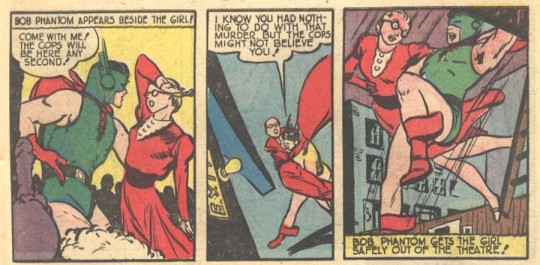



Bob Phantom by Mort Meskin
4 notes
·
View notes
Text


Mort Meskin - Leading Comics #1 (DC, 1941) The Seven Soldiers of Victory
Source
3 notes
·
View notes
Text

Action Comics #42
Writer: Mort Weisinger
Artist: Mort Meskin
Inker: Mort Meskin
19 notes
·
View notes
Note
What are your favorite JSA designs ?
that's a very broad question given that you didn't specify which incarnation of the jsa but i'll go with a random assortment of some of my favorite members from all over :)
alan scott
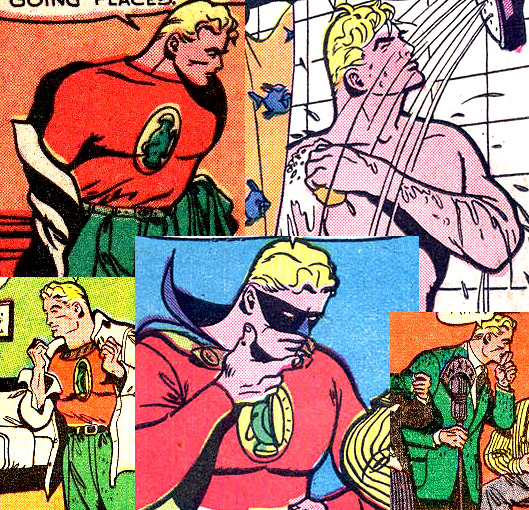
there's just no beating paul reinman as far as i'm concerned! a couple designs have come close (paul smith in the golden age 1993 and eduardo barreto in all-american comics 1999 as well as mikel janin's current work on justice society of america 2022 all come to mind) but mr reinman had it all figured out all the way back in comic cavalcade 1942. the ideal alan is old hollywood handsome and just about the biggest guy in the room at all times but with rounded edges too, the kinda physique born out of physical work during his years on the railroad and later maintained by the starheart. james robinson certainly isn't wrong when he says "no one else's that tall" in tga '93 #2!
jay garrick
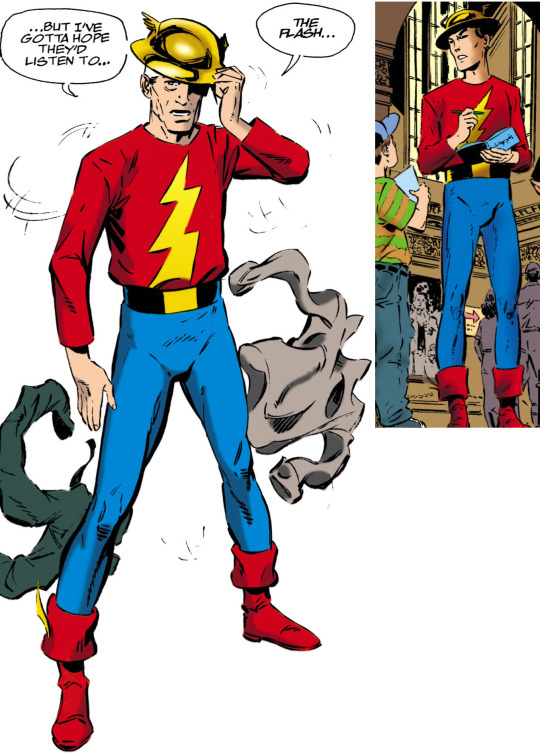
in contrast to alan, jay's gotta be all thin and lanky (and relatively short although he doesn't quite look it) and john byrne's the man for the job through his jsa arc in wonder woman 1987 #130-133. diego olortegui's work on jay garrick: the flash 2023 is also entirely ideal to me -- that's the jay i know and love!
jonathan law
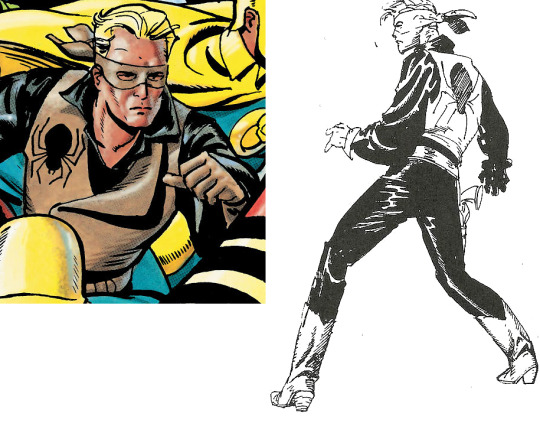
the fantastic tarantula costume from all-star squadron is already a redesign of his original 1940s costume (which was a bit too kirby-era sandman for everybody's taste) but the gunfighter-esque look paul smith gave him in the golden age 1993 is beyond anything. so good it's unreal.
rex tyler
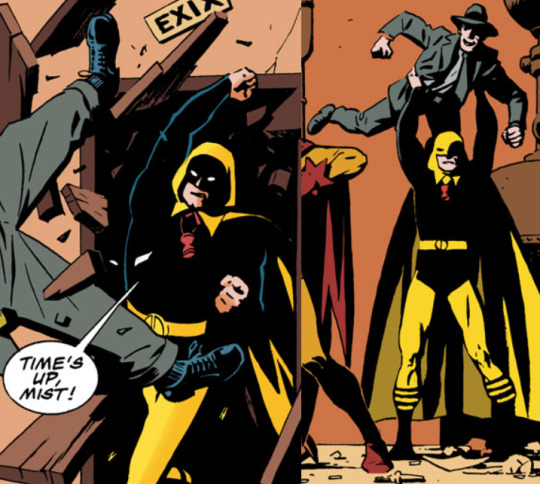
peter snejbjerg's hourman. perfection. something wildly deeply charming to me about the clean lines and the manic energy of his three-issue appearance in starman 1994 #77-79, perfectly in character for my ol' pal rexy. there's plenty of great hourmen out there, this one's mine :)
ted knight
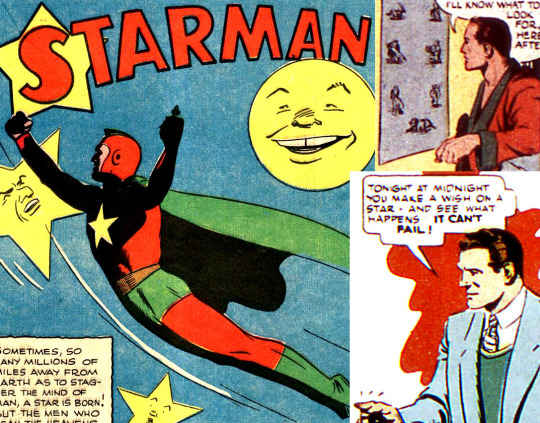
it's not even worth pretending anyone has ever topped emil gershwin's work on starman or ever will. my god, it's extraordinary. it's something else entirely. emil's brief run on adventure comics 1938 was utter perfection, and that's saying something considering he followed jack burnley whose work on ted was already gorgeous!
johnny quick
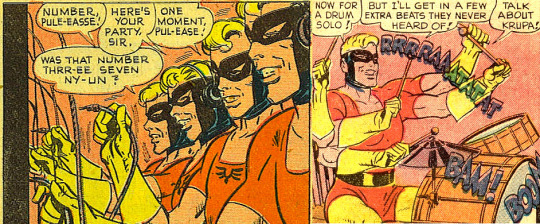
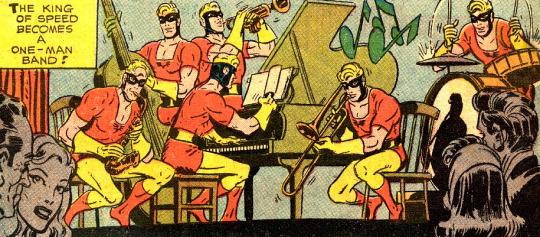
mort meskin's sense of motion, his lithe lean playful impossibly dynamic johnny quick... that's the stuff of legends. it doesn't get better than meskin on more fun comics 1936, and the classics are classics for a reason.
jim corrigan
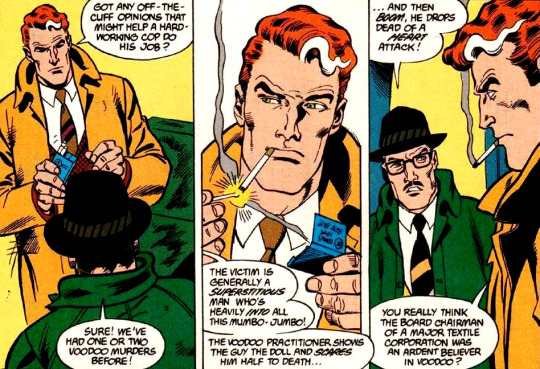
i mean, jim aparo's hard boiled detective throughout wrath of the spectre 1988. what else is there to say!
#asks#anon#alan scott#jay garrick#jonathan law#rex tyler#johnny chambers#jim corrigan#green lantern#the flash#the tarantula#hourman#johnny quick#the spectre#jsa
35 notes
·
View notes
Text

If you want something minimalistic, May I suggest his semi official signature that was made by mort meskin? 👀
Here's his full artwork if you wanna see

Ok vigilante fans should my first tattoo be of vigilante or smth else?
15 notes
·
View notes
Text

More Golden-Age Vigilante with art by Mort Meskin.
36 notes
·
View notes
Text

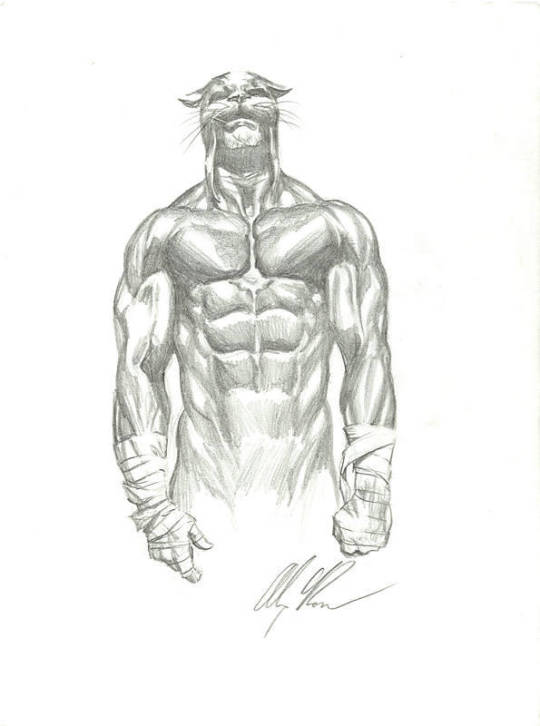

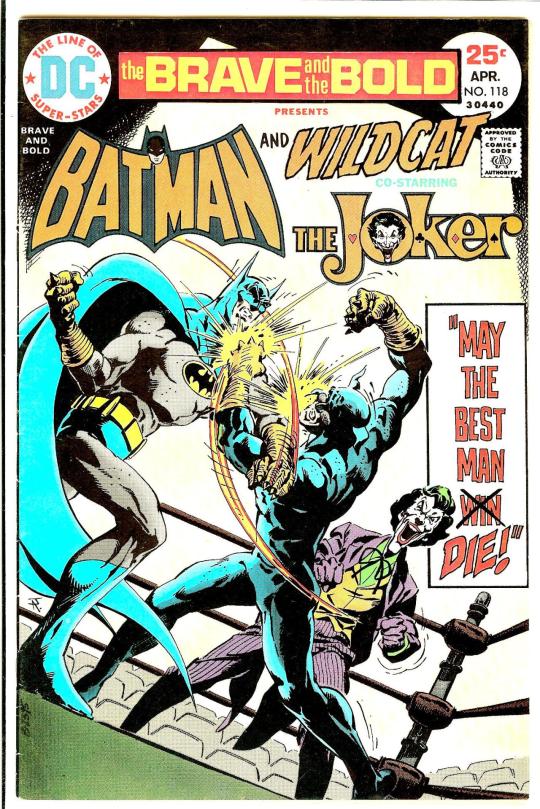
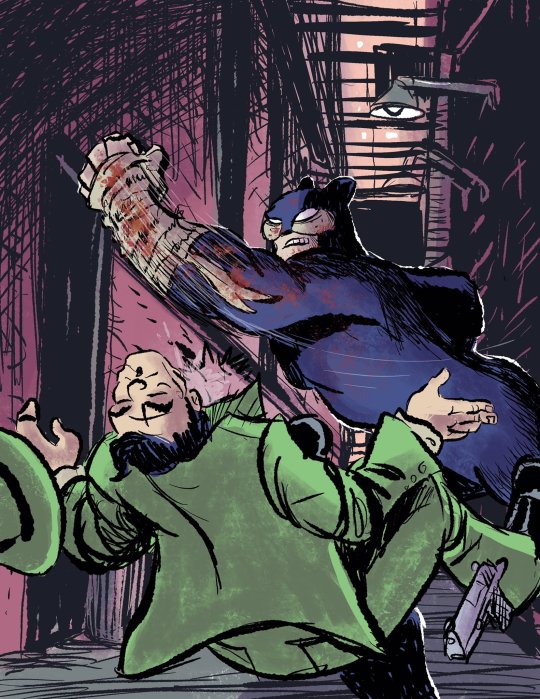
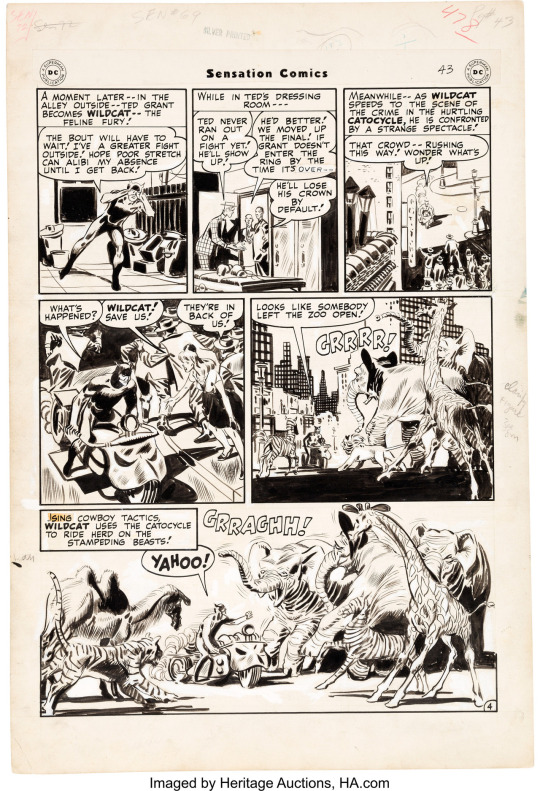


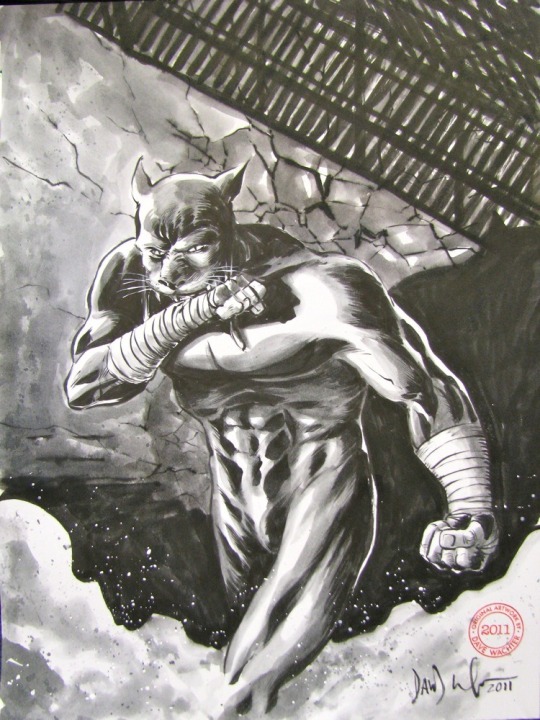

Wildcat
Art by...
1) Alex Toth
2) Alex Ross
3) Steve Rude
4) Jim Aparo
5) Jeremy Massie
6) Mort Meskin
7) Neal Adams
8) Kerry Callen
9) Dave Watcher
10) Ramon Villalobos
#Comics#DC Comics#Wildcat#Ted Grant#Justice Society#JSA#Justice Society Of America#Alex Ross#Alex Toth#Steve Rude#Jim Aparo#Neal Adams#Kerry Callen#Ramon Villalobos#Dave Watcher#Mort Meskin#Jeremy Massie#Art#DC#Sports#Boxing
100 notes
·
View notes
Photo

Mort Meskin: “Wildcat” original art from Sensation Comics #69 (1947)
30 notes
·
View notes
Text

Huntress (DC Comics)
The Huntress is the name of several fictional characters appearing in American comic books published by DC Comics, commonly in association with the superhero Batman. The two best-known women to bear the Huntress name are Helena Bertinelli and Helena Wayne, the latter being from an alternate universe. Although Helena Wayne and Helena Bertinelli are both superheroes, the Huntress of the Golden Age was a supervillain.
Huntress
Helena Wayne as Huntress in Wonder Woman (vol. 1) #299 (January 1983), art by Joe Staton (pencils) and Bob Smith (inks), and Adrienne Roy (colors).
Publisher
DC Comics
First appearance
Sensation Comics #68 (August 1947)
Created by
Mort Meskin
Characters
Paula Brooks
Helena Wayne
Helena Bertinelli
The Huntress
Huntress
The Huntress #1 (April 1989), featuring the Helena Bertinelli version of the character, art by Joe Staton.
Series publication information
Publisher
DC Comics
Schedule
Monthly
Format
(vol. 1)
Ongoing series
(vol. 2)
Limited series
Genre
Superhero
Publication date
(vol. 1)
April 1989 – October 1990
(vol. 2)
June – September 1994
Number of issues
(vol. 1)
19
(vol. 2)
4
Main character(s)
Helena Bertinelli
Paula Lian Brooks
Characterization
edit
Paula Brooks
edit
Main article: Paula Brooks
The Golden Age Huntress was a supervillain with the real name of Paula Brooks who battled the superhero Wildcat, first appearing in Sensation Comics #68. She joined the second Injustice Society of America and stole Plymouth Rock. She married fellow supervillain the Sportsmaster.
The character was later retroactively renamed the Tigress in the pages of Young All-Stars. These stories took place prior to her villainous career. At this point, the young Paula Brooks was a superheroine, and fought both Nazis and criminals as a Young All-Stars member.
Helena Wayne
edit
Main article: Huntress (Helena Wayne)
The Bronze Age Huntress was Helena Wayne, the daughter of the Batman and Catwoman of Earth-Two, an alternate universe established in the early 1960s as the world where the Golden Age stories took place.[1] Earth-Two was also the home of the Golden Age versions of various DC characters.
Created by Paul Levitz, Joe Staton, and Bob Layton, her first appearance was in All Star Comics #69 (December 1977) and DC Super Stars #17, which came out the same day[2] and revealed her origin.[3] She appeared in Batman Family #17-20 when it expanded into the Dollar Comics format for its last few issues.[4] The bulk of her solo stories appeared as backup features in issues of Wonder Woman beginning with issue #271 (September 1980).[4][5]
Helena's parents trained her to be a superb athlete. After finishing school, she joined the law firm of Cranston and Grayson, where Dick Grayson, alias Robin, was a partner.
Helena began her superhero career when a criminal blackmailed her mother into resuming action once again as Catwoman—an act that eventually led to her death. Helena, deciding to bring the criminal responsible to justice, created a costume for herself, fashioned some weapons from her parents' equipment (including her eventual trademark, a crossbow), and set out to bring in the criminal. After accomplishing this, Helena decided to continue to fight crime under the codename "The Huntress".
In All Star Comics #72, Helena formally joined the Justice Society of America where she struck up a friendship with fellow new superheroine Power Girl. As a JSA member, she participated in several of the annual JLA/JSA meetings, most of which took place on Earth-One. Helena was also briefly associated with the superhero group Infinity, Inc.
During the 1985 miniseries Crisis on Infinite Earths, Helena was killed while attempting to save the lives of several children. After Crisis ended, Helena Wayne's existence, like that of her parents and Earth-Two's Dick Grayson, was retroactively erased from the remaining Earth and the world no longer remembered her.
The New 52
edit
Helena Wayne as Huntress in Huntress (vol. 3) #4 (March 2012); art by Marcus To.
In the final issue of 52, a new Multiverse is revealed, originally consisting of 52 identical realities. Among the parallel realities shown is one designated "Earth-2". As a result of Mister Mind "eating" aspects of this reality, it takes on visual aspects similar to the Pre-Crisis Earth-Two, including the Huntress among other Justice Society of America characters. The names of the characters and the team are not mentioned in the panel in which they appear, but the Huntress is visually similar to the Helena Wayne Huntress.[6] Geoff Johns confirmed that it is indeed the Earth-2 Batman's daughter, the Huntress.[7] As prefigured by comments from Grant Morrison, this new alternate universe is not the original/Pre-Crisis Earth-Two and ensuing Justice Society of America exploration disclosed that this Helena Wayne/Huntress was a member of the Justice Society Infinity, Earth-2's merged JSA and Infinity, Inc. and was in a relationship with Dick Grayson/Robin in this world. Since Power Girl briefly visited that world, there has been no subsequent depiction of the new Helena Wayne/Huntress of Earth-2.[8]
In September 2011, The New 52 rebooted DC's continuity. In this new timeline, the Huntress is re-established in 2012 in the ongoing series Worlds' Finest, along with Power Girl. In this series, the Huntress is in reality Helena Wayne from Earth 2. She and Power Girl, who is Superman's cousin on Earth 2, were mysteriously hurled to the mainstream DC Universe after a battle with Darkseid's minions.[9] A retrospective prequel to the series disclosed that her mother was the former Catwoman (Selina Kyle).
Helena Bertinelli
edit
Main article: Huntress (Helena Bertinelli)
Helena Bertinelli as the Huntress on a splash page of The Huntress #1 (April 1989), art by Joe Staton (pencils) and Bob Smith (inks), and Robbie Busch (colors).
Following the 1985 miniseries Crisis on Infinite Earths, the Helena Wayne version of the Huntress was removed from continuity. DC Comics introduced a new version of the Huntress with the same first name and physical appearance, and with a similar costume, but with an entirely different backstory and personality.
The Pre-New 52 Huntress was Helena Rosa Bertinelli (in some early appearances, Helena Janice Bertinelli), the daughter of one of Gotham's Mafia bosses who, after seeing her entire family murdered in a mob hit, vows revenge. During the "No Man's Land" story line, she works as Batgirl, but not alongside Batman (whom the citizens believe abandoned them).
Batman considers her to be too unpredictable and violent. Others in the Batman family feel differently; Nightwing had a brief romantic fling with her, while she and Tim Drake share a good professional relationship. Early in his career he worked with the female vigilante, and later cleared her name in a murder case. Batman sponsors Huntress's membership in the Justice League,[10] and for some time, Huntress was a respected member of the League. Under the guidance of heroes such as Superman, she grew in confidence, but was forced to resign after Batman stopped her from killing the villain Prometheus.[11]
The emergence of Bertinelli as the Huntress has not kept DC from occasionally paying homage to the Helena Wayne incarnation of the character. During a Post-Crisis JLA-JSA team-up, Bertinelli was so impressed with the skill and prowess of the Flash (Jay Garrick), Hippolyta, and Wildcat, stating humbly, "I wanna join the Justice Society . . . "[12] Additionally, Power Girl sought her out for someone to talk to, even though the two have never really interacted.
The character was featured in the comic book series Birds of Prey from 2003 onwards as a member of the eponymous team. Although she is still depicted as prone to excessive violence, she became a valuable member of the team.
In the alternate timeline of the 2011 "Flashpoint" storyline, the Huntress joined with the Amazons' Furies.[13]
In other media
edit
See also: Paula Brooks § In other media, Huntress (Helena Wayne) § In other media, and Huntress (Helena Bertinelli) § In other media
Television
edit
Live-action
edit
The Helena Wayne incarnation of the Huntress appears in Legends of the Superheroes, portrayed by Barbara Joyce.
The Helena Wayne incarnation of the Huntress, renamed Helena Kyle, appears in Birds of Prey, portrayed by Ashley Scott.
Helena Kyle makes a cameo appearance in "Crisis on Infinite Earths", portrayed again by Ashley Scott.[14]
The Helena Bertinelli incarnation of the Huntress appears in the first two seasons of Arrow, portrayed by Jessica De Gouw.
Animation
edit
The Helena Wayne incarnation of the Huntress was considered to appear in Batman Beyond.[15]
The Helena Bertinelli incarnation of the Huntress appears in Justice League Unlimited, voiced by Amy Acker.
The Helena Bertinelli incarnation of the Huntress appears in Batman: The Brave and the Bold, voiced by Tara Strong.
A character inspired by Paula Brooks / Huntress named Paula Nguyen appears in Young Justice, voiced by Kelly Hu.
Film
edit
The Helena Bertinelli incarnation of the Huntress appears in Birds of Prey, portrayed by Mary Elizabeth Winstead.[16]
The Helena Bertinelli incarnation of the Huntress makes a non-speaking appearance in Injustice.
The Helena Wayne incarnation of the Huntress appears in Justice League: Crisis on Infinite Earths - Part One, voiced by Erika Ishii.[17]
Video games
edit
The Helena Bertinelli incarnation of the Huntress appears as an unlockable playable character in Justice League Heroes, voiced by Vanessa Marshall.
The Helena Bertinelli incarnation of the Huntress appears as an unlockable playable character in Lego Batman: The Videogame.
The Helena Bertinelli incarnation of the Huntress appears as a boss and playable character in DC Universe Online, voiced by Claire Hamilton.
The Helena Bertinelli incarnation of the Huntress appears as an unlockable playable character in Lego Batman 2: DC Super Heroes.
The Helena Bertinelli incarnation of the Huntress, based on Jessica De Gouw's portrayal, appears as a playable DLC character in Lego Batman 3: Beyond Gotham.
The Helena Bertinelli incarnation of the Huntress appears in Lego DC Super-Villains, voiced by Sumalee Montano.
Miscellaneous
edit
The Helena Bertinelli incarnation of the Huntress appears in The Batman and Robin Adventures #19.
The Helena Bertinelli incarnation of the Huntress appears in issue #2 of the Justice League Unlimited tie-in comic book series.
The Arrow incarnation of Helena Bertinelli / Huntress appears in the non-canonical Arrow: Season 2.5 tie-in comic book.
The Helena Bertinelli incarnation of the Huntress appears in the Injustice: Gods Among Us.
Reception
edit
Michael Eury and Gina Misiroglu characterized the original Huntress Paula Brooks as "a relatively obscure Golden Age villainess".[18][19] When that title was borrowed next for Helena Wayne, the reviewers found her "intriguingly distinguished by her parentage". This incarnation of the Huntress "so enthralled DC readers fascinated by the heroine's lineage and motivation" that she was spun out into her own successful series. When the character was eliminated by DC's Crisis on Infinite Earths series, it "was too popular to fully jettison from the DC universe". Consequently, the Huntress incarnation of Helena Bertinelli was introduced in her own series, and also used in a number of other media.[18]
Gladys L. Knight remarks that the Huntress Helena Wayne starts her career fighting criminals to avenge her mother's death, but unlike Catwoman she "fights on the right side of the law and is indeed distraught over her mother's criminal past". Knight found the Huntress' storylines thrilling.[20]
See also
edit
List of Batman supporting characters
List of Batman family enemies
References
edit
Greenberger, Robert (2008). The Essential Batman Encyclopedia. Del Rey. p. 184. ISBN 9780345501066.
DC Super Stars #17 (November-December 1977) at the Grand Comics Database: "Origin and first appearance of the Helena Wayne Huntress, who simultaneously first appears in this issue and All-Star Comics (DC, 1976 series) #69, both released August 24, 1977".
McAvennie, Michael (2010). "1970s". In Dolan, Hannah (ed.). DC Comics Year By Year A Visual Chronicle. Dorling Kindersley. p. 175. ISBN 978-0-7566-6742-9. DC Super Stars #17 (November–December 1977): While writer Paul Levitz and artist Joe Staton introduced the Huntress to the JSA in this month's All Star Comics #69, they concurrently shaped her origin in DC Super Stars.
Huntress (Helena Wayne) appearances at the Grand Comics Database
Manning, Matthew K. "1980s" in Dolan, p. 187: "The daughter of Batman and Catwoman from Earth-2 found a new home away from home in the pages of Wonder Woman's monthly title...a regular gig as the back-up feature to the Amazing Amazon's lead story. Handled by writer Paul Levitz and artist Joe Staton, the Huntress faced the villainy of the swamp creature Solomon Grundy".
52, no. 52, p. 13/3 (May 2, 2007). DC Comics.
Wizard #189
Brady, Matt (2007-05-08). "the 52 exit interviews: grant morrison". Newsarama. Archived from the original on May 10, 2007. Retrieved 2007-05-12.
Cowsill, Alan; Irvine, Alex; Korte, Steve; Manning, Matt; Wiacek, Win; Wilson, Sven (2016). The DC Comics Encyclopedia: The Definitive Guide to the Characters of the DC Universe. DK Publishing. p. 147. ISBN 978-1-4654-5357-0.
JLA Secret Files #2
JLA #40
JLA #31
Flashpoint: Wonder Woman and the Furies #2 (July 2011)
Ausiello, Michael (September 26, 2019). "Birds of Prey's Ashley Scott Will Bring Huntress to the Arrowverse 'Crisis'". TV Line. Retrieved September 26, 2019.
"Huntress". Archived from the original on 2007-01-28. Retrieved 2007-01-28.
D'Alessandro, Anthony (September 26, 2018). "'Birds Of Prey' Cast: Mary Elizabeth Winstead Wins Role Of Huntress; Jurnee Smollett-Bell Is Black Canary". Deadline. Retrieved September 26, 2018.
Harvey, James (December 5, 2023). ""Justice League: Crisis On Infinite Earths, Part One" Release Date". The World's Finest. Retrieved January 9, 2024.
Eury, Michael; Misiroglu, Gina (2012). "The Huntress". In Misiroglu, Gina (ed.). The Superhero Book: The Ultimate Encyclopedia of Comic-Book Icons an Hollywood Heroes (2nd ed.). Detroit: Visible Ink Press. pp. 186–187. ISBN 978-1-57859-375-0.
Bonadè, Sophie (3 December 2019). Des superhéroïnes à Gotham City: une étude de la (re)définition des rôles genrés dans l'univers de Batman (PDF) (PhD) (in French). Université Paris-Saclay. p. 60. Retrieved 23 November 2021.
Knight, Gladys L. (2010). Female Action Heroes: A Guide to Women in Comics, Video Games, Film, and Television. Greenwood. p. 38. ISBN 978-0-313-37612-2.
External links
edit
Official website Edit this at Wikidata
Amalgam Comics: The Huntress
Lair of the Huntress
Sequential Tart: The Huntress and the Hunted
The Watchtower Creator opinions on the Huntress
Last edited 11 days ago by Cyberlink420
Related articles
Paula Brooks
Comics character
Huntress (Helena Bertinelli)
Fictional character
Huntress (Helena Wayne)
Comics character
Wikipedia
Content is available under CC BY-SA 4.0 unless otherwise noted.
Privacy policy Terms of UseDesktop
i just see the name of my blorbos and i instantly lose all of my hinges and start going on a tangent like some sleeper agent specifically for hyperfixations
23 notes
·
View notes
Photo

Original Mort Meskin / George Roussos cover art for House of Secrets #58, featuring Mark Merlin Original Art (DC, 1963).
23 notes
·
View notes
Text
Closing out the big anniversaries this month, it's 80 years of The Vigilante! One of my favorite all-time Golden Age characters, let's take a look at Ol' Vig by some of the biggest names in comics!

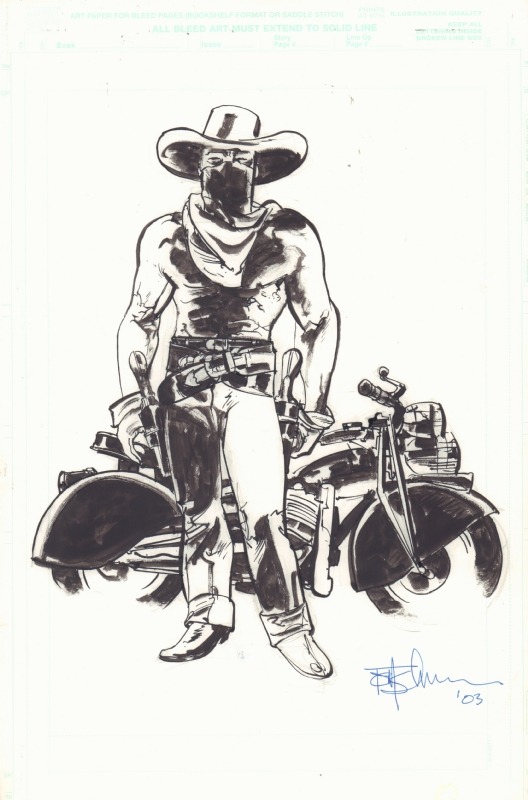





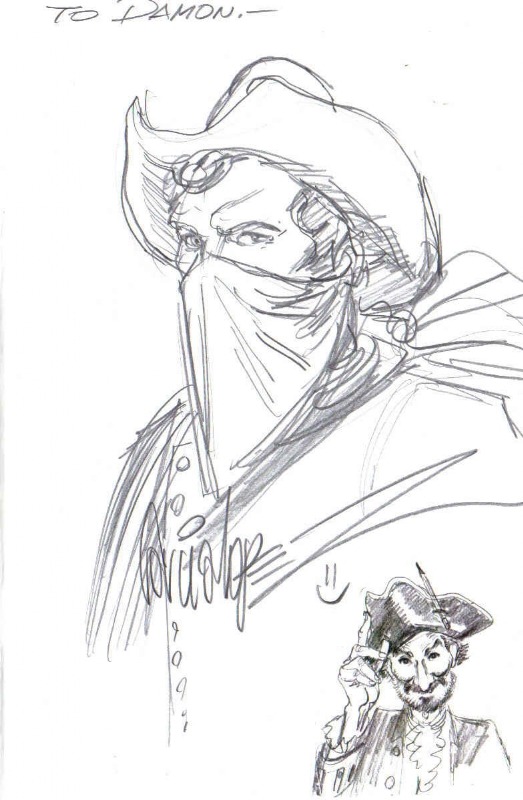
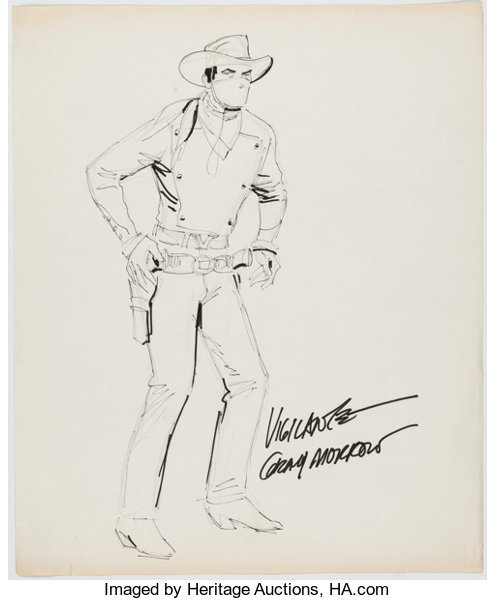

#dc comics#the vigilante#gray morrow#joe kubert#george perez#mort meskin#darwyn cooke#dick dillin#tony salmons#jose luis garcia lopez
39 notes
·
View notes